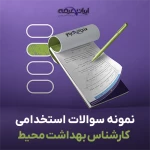Abstract
Lastly, there are growing evidences that nanosilver (NS) particles highly induce cytotoxic impacts in vitro and in vivo. Here, we analyzed the dose dependent effect of NS on histological changes, biochemical alterations and endocrine statuses, sperm parameters as well as chaperone Hsp70-2 expression. NS particles (50–60 nm) were administrated in 3 doses of 0.5, 1 and 5 mg/kg, intraperitoneally, for 35 days. The 0.3 mL normal saline was administrated in control-sham group. Histological alterations, sperm parameters, serum levels of LH, FSH and testosterone were evaluated. Germinal and Leydig cells RNA damage, Leydig cells steroidogenic foci, the testicular and sperm total antioxidant capacity (TAC), malondialdehyde (MDA), nitric oxide (NO) levels, immunohistochemical (IHC) expression and mRNA level of Hsp70-2 were analyzed. The NS, dose dependently, resulted in enhanced germinal cells degeneration, necrosis, seminiferous tubules atrophy and decreased serum levels of LH, FSH and testosterone. Elevated germinal and Leydig cells RNA damage associated with increased sperm abnormalities were observed in NS-treated groups. Expression of Hsp70-2 was up-regulated in 0.5 mg/kg, while its expression was decreased in 1 and 5 mg/kg NS-treated groups. Testicular and sperm TAC levels reduced. However, the MDA and NO levels significantly (P < 0.05) increased in all NS-treated groups. No histological and biochemical changes were detected in control-sham group. In conclusion, the NS particles exert their pathological impact via affecting testicular antioxidant and endocrine statuses, which in turn lead to diminished expression of Hsp70-2. Ultimately, by this mechanism NS particles adversely impact the cellular RNA, DNA and protein contents.






